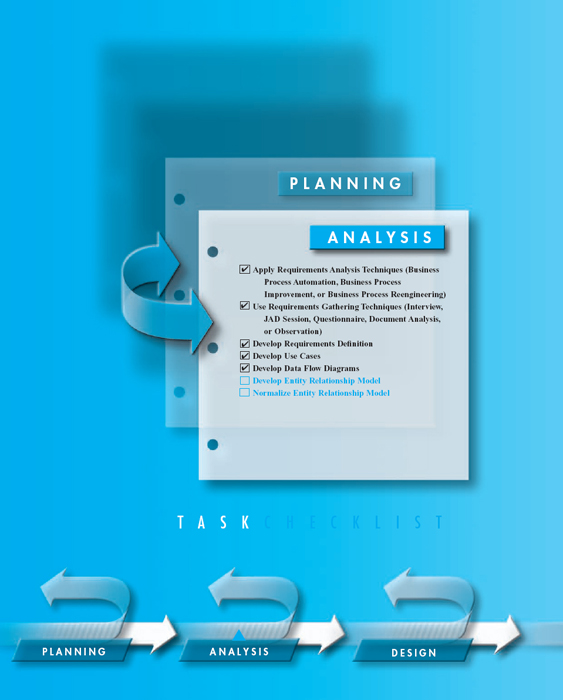
CHAPTER 6
DATA MODELING
A data model describes the data that flow through the business processes in an organization. During the analysis phase, the data model presents the logical organization of data without indicating how the data are stored, created, or manipulated so that analysts can focus on the business without being distracted by technical details. Later, during the design phase, the data model is changed to reflect exactly how the data will be stored in databases and files. This chapter describes entity relationship diagramming, one of the most common data modeling techniques used in industry.
OBJECTIVES
- Understand the rules and style guidelines for creating entity relationship diagrams.
- Be able to create an entity relationship diagram.
- Become familiar with the data dictionary and metadata.
- Understand how to balance between entity relationship diagrams and data flow diagrams.
- Become familiar with the process of normalization.
CHAPTER OUTLINE
Introduction
The Entity Relationship Diagram
Reading an Entity Relationship Diagram
Elements of an Entity Relationship Diagram
The Data Dictionary and Metadata
Creating an Entity Relationship Diagram
Building Entity Relationship Diagrams
Advanced Syntax
Applying the Concepts at Tune Source
Validating an ERD
Design Guidelines
Normalization
Balancing Entity Relationship Diagrams with Data Flow Diagrams
Summary
Appendix 6A: Normalizing ...
Get Systems Analysis and Design, 4th Edition now with the O’Reilly learning platform.
O’Reilly members experience books, live events, courses curated by job role, and more from O’Reilly and nearly 200 top publishers.

